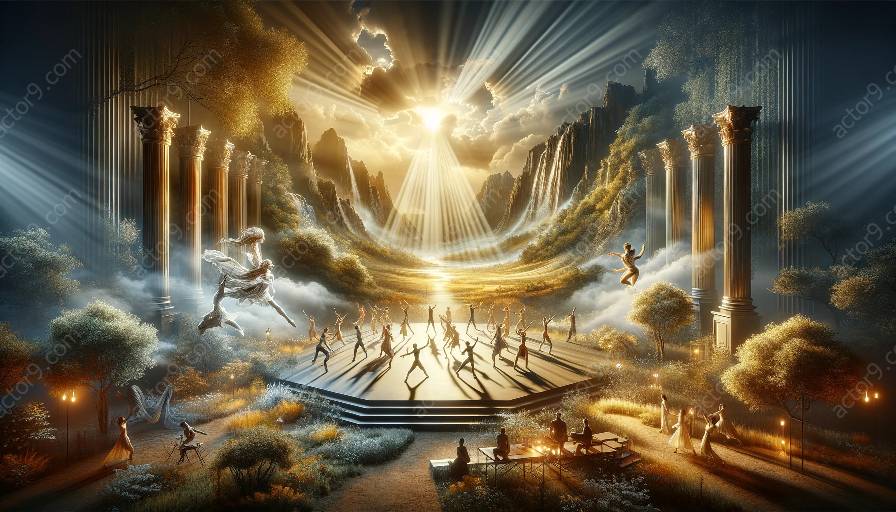The use of symbolism and metaphor in theatrical lighting holds significant creative potential in physical theatre, shaping the performers' environment, emotions, and movement. This article explores the key concepts of symbolism and metaphor in the context of physical theatre, emphasizing the role of lighting in enhancing the overall theatrical experience.
The Role of Lighting in Physical Theatre
Physical theatre is a captivating form of performance that emphasizes the use of the body as the primary means of expression. In physical theatre, lighting serves as a crucial element that not only illuminates the stage but also communicates moods, themes, and narratives to the audience. The use of lighting in physical theatre goes beyond mere illumination, as it contributes to the creation of a dynamic and immersive theatrical space, allowing performers to convey powerful stories through movement and visual impact.
Understanding Symbolism and Metaphor
Symbolism and metaphor are essential tools in the artistic arsenal of physical theatre, enabling performers and lighting designers to convey abstract ideas and evoke emotional responses from the audience. Symbolism refers to the use of objects, colors, or lighting patterns to represent deeper meanings or concepts related to the performance. Metaphor, on the other hand, involves the use of suggestive or abstract lighting techniques to evoke specific emotions, atmospheres, or imagery without explicitly stating them.
The Impact of Symbolism and Metaphor in Theatrical Lighting
When applied to theatrical lighting in physical theatre, symbolism and metaphor can transform the stage into a canvas of visual storytelling. Lighting cues can embody the essence of a character or convey the underlying themes of the performance, providing a multi-layered experience for the audience. Whether through the use of contrasting light and shadow, evocative color palettes, or dynamic movement of light sources, the interplay of symbolism and metaphor in lighting elevates the theatrical narrative and enhances the audience's engagement with the performance.
Enhancing Emotional Dynamics and Movement
In physical theatre, lighting serves as a dynamic tool that amplifies the performers' emotional dynamics and movement on stage. By leveraging symbolism and metaphor in lighting design, directors and lighting designers can enhance the physicality of the performers, accentuating their movements and expressions with nuanced lighting effects. This synergy between lighting and movement amplifies the audience's connection with the performers, elevating the overall impact of the physical theatre experience.
Creative Collaboration and Innovation
The exploration of symbolism and metaphor in theatrical lighting for physical theatre encourages collaboration and innovation among the creative team. From concept development to technical execution, the integration of symbolism and metaphor in lighting design fosters a collaborative process where directors, choreographers, and lighting designers work together to craft visually compelling narratives, expanding the boundaries of traditional stage lighting and pushing the artistic envelope in physical theatre.
Conclusion
Symbolism and metaphor in theatrical lighting play an integral role in the expressive canvas of physical theatre, offering a rich tapestry of visual storytelling, emotional resonance, and creative innovation. By harnessing the power of lighting to embody abstract concepts and evoke visceral responses, physical theatre productions can transcend the boundaries of traditional narrative forms, immersing audiences in a world where movement, illumination, and symbolism converge to create unforgettable theatrical experiences.




































